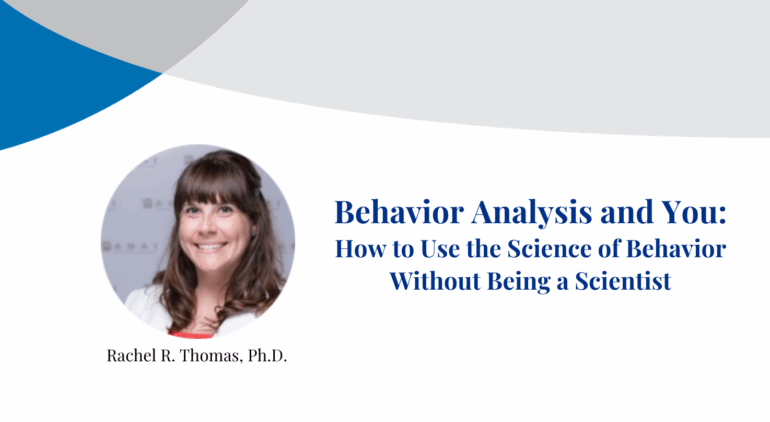Have you ever found yourself asking the question, “Why are people like this?” or “What motivated them to act like that?” Well, there’s a science for that: behavior analysis.
Behavior analysis is a multitiered, natural science that is composed of (but not limited to) applied behavior analysis (evaluating and changing behaviors that are important to an individual); clinical practice (our most famous application is autism treatment); and organizational behavior management (behavior change in a corporate setting). No matter the branch of the science of behavior, we are looking at the same core concepts.
Human behavior is complex. How do we take something so complex and make decisions or help others without fancy tools or years to study?
We simply stop, take a step back, and take perspective.
In 2021, Pat Friman, Ph.D., leader of Omaha’s own Boys Town, gave a TED Talk entitled “There Is No Such Thing as a Bad Boy: Igniting Compassion for Problematic Behavior.” In it, Dr. Friman describes how the small act of relating oneself to another person’s potential struggles is a small step anyone can make to fostering compassion. Instead of prescribing negative personal assessments—e.g., “He’s just lazy”— ask yourself if there are any barriers preventing performance. If you can identify a barrier and remove it for someone, you’ve just improved their quality of life and used a bit of behavior analysis to get there.
I’m sure you’re asking, “What if there are no identifiable barriers? Am I allowed to call them lazy yet?” Unfortunately, no. By the end of this article, I aim to remove the word “lazy” from your personal vocabulary.
There are occasions when sometimes intrinsic motivation just isn’t there:
“They should just know better.”
“They are an adult; they can figure it out.”
Sometimes we need a little reward, and that is OK. In behavior analysis, we call a rewarding consequence “positive reinforcement.” Positive reinforcement is the addition of something following an action, which promotes that action happening again in the future.
Positive reinforcement doesn’t have to take the form of candy or money; it can be as simple as saying “thank you” or acknowledging someone’s hard work following the completion of something difficult. Yes, the expectation is that people get their tasks completed in a timely manner and ideally without complaining, but sometimes we forget what it was like to be in those lower times in our lives. Sometimes we forget how desperate we were to be noticed by our coworkers, peers, or bosses, how we sought their approval, the late nights of extra work after working an eight-hour shift. Positive reinforcement goes a long way to improve the lives of the people around us.
I have provided you a bird’s-eye view of a vast science that offers no shortage of strategies for anyone who wants to improve their quality of life or the lives of their loved ones. Applied behavior analysis has been evaluated and used to make positive change in hundreds of areas by thousands of scientists conducting research across many settings.
You’d have to go through many years of school and training to become a professional behavior analyst, but there’s nothing stopping you from applying a bit of the science of behavior to your everyday life. Go forth, practice compassion, seek out opportunities to give some positive reinforcement, and make the world a better place.

